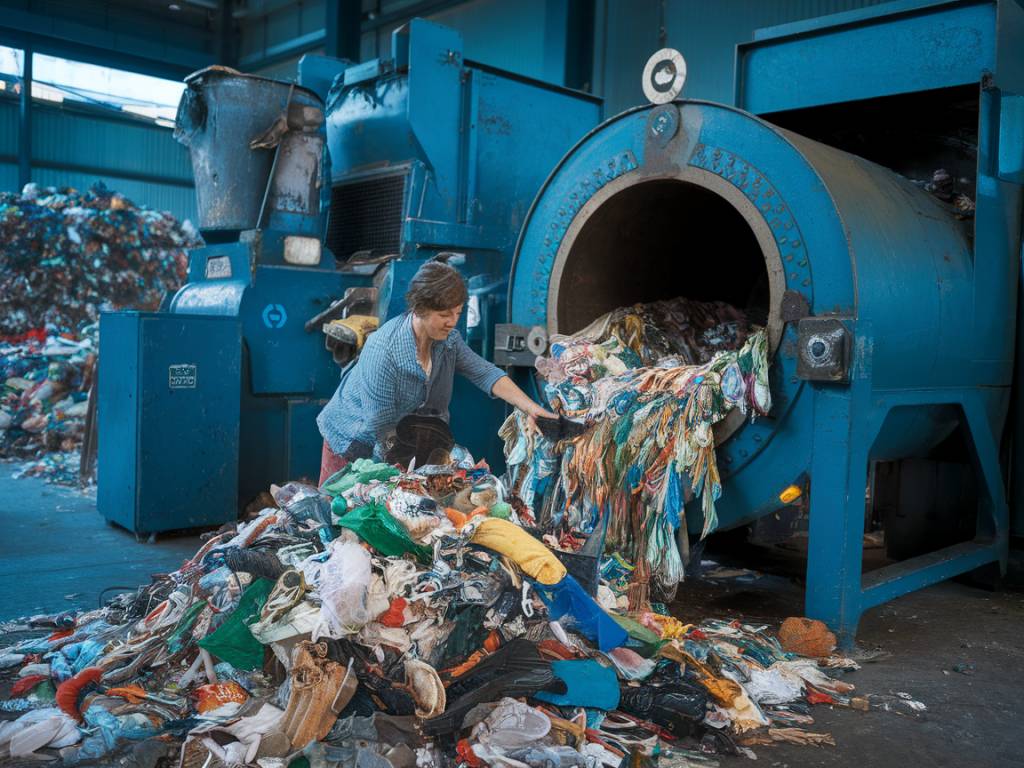As businesses worldwide grapple with the growing environmental crisis, the circular economy offers a promising solution to reduce waste. By creating closed-loop systems that reimagine how resources are used, companies can not only mitigate their environmental impact but also drive innovation and efficiency. In this article, I will provide practical advice, concrete examples, and relevant case studies to illustrate how your business can integrate circular economy principles and significantly reduce waste.
Understanding the Circular Economy
The traditional linear economy follows a « take, make, dispose » model, leading to significant resource waste and environmental degradation. In contrast, the circular economy aims to keep products, components, and materials in use for as long as possible. This regenerative approach minimizes waste and maximizes the value extracted from resources, promoting sustainability.
Adopting Circular Economy Practices in Your Business
Transitioning to a circular economy model requires a fundamental shift in how businesses design, manufacture, and manage products. Here are some actionable strategies to get you started:
1. Design for Durability and Repairability
One of the core principles of the circular economy is designing products that last longer and can be easily repaired. This reduces the need for frequent replacements and helps prevent waste. For instance, Patagonia, the outdoor clothing company, is known for its durable products and offers repair services to extend the life of their gear. To adopt this practice, consider the following:
- Use high-quality materials that withstand wear and tear.
- Design products with modular components that can be easily replaced or upgraded.
- Provide customers with repair kits or guides to fix common issues.
2. Implement Take-Back Programs
Take-back programs encourage customers to return used products, which can then be refurbished, recycled, or remanufactured. This approach helps retain valuable materials within the supply chain and reduces the environmental impact of waste disposal. A notable example is Dell’s closed-loop recycling program, which allows customers to return old electronics for recycling and reuse in new products. To implement a take-back program in your business:
- Set up collection points for customers to drop off used products.
- Partner with recycling facilities to process returned items.
- Offer incentives, such as discounts or rewards, to encourage customers to participate.
3. Embrace Product-as-a-Service Models
Product-as-a-service (PaaS) models involve renting or leasing products instead of selling them outright. This encourages businesses to maintain ownership and responsibility for the entire lifecycle of their products, thus promoting sustainability. An example is the fashion company Rent the Runway, which provides designer clothing rentals, reducing the need for customers to purchase new clothes. To explore PaaS in your business:
- Identify products that can be provided as a service rather than sold.
- Develop subscription or rental plans that offer value to your customers.
- Ensure a robust logistics and maintenance system to manage product rentals efficiently.
4. Leverage Digital Technologies
Technological advancements can facilitate the transition to a circular economy by enhancing resource efficiency and enabling better waste management. For example, IoT (Internet of Things) sensors can monitor the condition of products in real-time, helping identify when repairs or replacements are needed. Additionally, blockchain technology can improve transparency and traceability in supply chains, ensuring that materials are sourced and recycled responsibly. To leverage digital technologies in your circular economy efforts:
- Invest in IoT devices to track product usage and performance.
- Utilize data analytics to optimize resource use and reduce waste.
- Explore blockchain solutions to enhance supply chain transparency and accountability.
5. Collaborate with Stakeholders
Achieving a successful circular economy requires collaboration across the entire value chain, from suppliers to customers. Working with stakeholders can generate innovative solutions and create more sustainable practices. For example, the Ellen MacArthur Foundation collaborates with businesses, governments, and academia to promote circular economy concepts and implement practical strategies. To foster collaboration in your business:
- Engage with suppliers to develop sustainable sourcing and production methods.
- Partner with other businesses to share best practices and resources.
- Involve customers in your sustainability efforts by educating them about circular economy principles.
Case Studies and Examples
Let’s look at some real-world examples of businesses successfully implementing circular economy practices:
Nike’s Closed-Loop Manufacturing
Nike has embraced circular economy principles through its « Nike Grind » program, which transforms manufacturing waste and end-of-life products into new materials. By doing so, Nike has reduced its reliance on virgin materials and minimized waste. This initiative not only supports sustainability but also fosters innovation in product design and manufacturing.
Interface’s ReEntry Program
Interface, a global flooring manufacturer, has implemented the « ReEntry » program to take back and recycle old carpet tiles. The recycled materials are used to create new products, reducing the demand for raw materials and minimizing waste. Interface’s commitment to the circular economy has helped the company achieve significant environmental and cost savings.
Philips Lighting’s Service Model
Philips Lighting has shifted from selling light bulbs to providing lighting as a service. Customers pay for the light they use, while Philips maintains and upgrades the lighting systems. This model ensures that products are efficiently used and responsibly disposed of, promoting sustainability and reducing waste.
Recommendations for Your Business
By implementing circular economy principles, your business can reduce waste, drive innovation, and enhance sustainability. Here are some actionable recommendations to get started:
- Assess your current waste streams and identify opportunities for improvement.
- Design products with durability, repairability, and recyclability in mind.
- Establish take-back programs to reclaim and recycle used products.
- Explore product-as-a-service models to retain ownership and responsibility for product lifecycles.
- Leverage digital technologies to enhance resource efficiency and waste management.
- Collaborate with stakeholders across the value chain to develop innovative and sustainable solutions.
Integrating circular economy practices into your business may require significant changes, but the benefits are substantial. By reducing waste, conserving resources, and promoting sustainability, you can position your business for long-term success while contributing to a healthier planet. Start small, experiment, and iterate to find the best strategies that work for your unique business needs.

